Extra Crispy
"Hey Ethel - Paul is off his meds again! He's hyping a warm front. Doesn't he know it gets hot here in the summer?"
Well played. I'd agree, if we were looking at
90F. But 100F, with a dew point of 70F? Seriously hot. Men will sweat,
women will glow and dogs will pant as the hottest front of summer surges
north in two waves or "pulses". The first free sauna arrives today into
Tuesday; another surge of 95-100 F char-broiled fun brewing for Labor
Day weekend. 3 days ago I predicted this would be the hottest week of
summer. This still looks likely.
An Excessive Heat Warning is posted. When it's
this hot & humid your body can't cool itself naturally by
evaporating sweat off your skin. The result? You can overheat quickly.
Heat stroke poses the greatest risk to the elderly, people without A/C
and those working outside. Cut down on PM sun (if you can) the next
couple of afternoons, and remember that your pets feel the heat too.
It's too dry out there; there's just a slight
chance of a stray storm Monday & Thursday, no sight of the
widespread soaking that we really need right now.
I was at the fair yesterday - picked up some
bratwurst-flavored lip balm at the Star Tribune booth. But I shouldn't
have slipped that Sweet Martha cookie in my back pocket. Big mistake.
Excessive Heat Warning. A Heat Advisory is posted
for all of central and southern Minnesota, and much of Wisconsin. The
urban heat island will add about 5F heat later today, leading to the
issuance of an Excessive Heat Warning for the immediate Twin Cities
metro. Levels of heat and humidity will be dangerous later today, with a
very significant risk of heat exhaustion and heat stroke. Take it easy
out there - and consider checking in on older friends and neighbors. The
most vulnerable population to extreme heat: infants, the elderly,
people with chronic illnesses, people without A/C and those that work
vigorously outdoors. Details from NOAA:
...EXCESSIVE HEAT WARNING REMAINS IN EFFECT FROM NOON SUNDAY TO
MIDNIGHT CDT TUESDAY NIGHT...
AN EXCESSIVE HEAT WARNING REMAINS IN EFFECT FROM NOON SUNDAY TO
MIDNIGHT CDT TUESDAY NIGHT.
* TEMPERATURE: AFTERNOON HEAT INDICES INCREASING TO BETWEEN 100
AND 107 FROM SUNDAY THROUGH TUESDAY WITH OVERNIGHT LOWS ONLY
FALLING INTO THE MID 70S TO LOWER 80S.
* IMPACTS: THE HOT AND HUMID CONDITIONS WILL LEAD TO A HEIGHTENED
RISK OF HEAT RELATED STRESS AND ILLNESS... SPECIALLY FOR THE
YOUNG AND ELDERLY...THOSE WITHOUT AIR CONDITIONING...AND PEOPLE
PARTICIPATING IN STRENUOUS OUTDOOR ACTIVITIES.
PRECAUTIONARY/PREPAREDNESS ACTIONS...
TAKE EXTRA PRECAUTIONS IF YOU WORK OR SPEND TIME OUTSIDE. WHEN
POSSIBLE...RESCHEDULE STRENUOUS ACTIVITIES TO EARLY MORNING OR
EVENING. KNOW THE SIGNS AND SYMPTOMS OF HEAT EXHAUSTION AND HEAT
STROKE. WEAR LIGHT WEIGHT AND LOOSE FITTING CLOTHING WHEN
POSSIBLE AND DRINK PLENTY OF WATER.
TO REDUCE RISK DURING OUTDOOR WORK...THE OCCUPATIONAL SAFETY AND
HEALTH ADMINISTRATION RECOMMENDS SCHEDULING FREQUENT REST BREAKS
IN SHADED OR AIR CONDITIONED ENVIRONMENTS. ANYONE OVERCOME BY
HEAT SHOULD BE MOVED TO A COOL AND SHADED LOCATION. HEAT STROKE
IS AN EMERGENCY...CALL 9 1 1.
AN EXCESSIVE HEAT WARNING MEANS THAT A PROLONGED PERIOD OF
DANGEROUSLY HOT TEMPERATURES WILL OCCUR. THE COMBINATION OF HOT
TEMPERATURES AND HIGH HUMIDITY WILL COMBINE TO CREATE A DANGEROUS
SITUATION IN WHICH HEAT ILLNESSES ARE LIKELY. DRINK PLENTY OF
FLUIDS...STAY IN AN AIR-CONDITIONED ROOM...STAY OUT OF THE SUN...
AND CHECK UP ON RELATIVES AND NEIGHBORS.

Flirting With 100F Today and Monday? Here are the 4
pm predicted temperatures from the 12km NAM model, showing a potential
for 100-degree heat, especially west metro of the Twin Cities to St.
Cloud, Willmar and Mankato. An even larger footprint of 100-degree highs
are possible Monday afternoon; the worst of the blast-furnace heat
shifting south/west of MSP by Tuesday. Maps above: Ham Weather.
Heat Bubble. Here's the latest
84 hour (12km) NAM model of 2 meter temperatures showing an expansive,
unusually strong ridge of high pressure setting up over the Plains and
Midwest, a huge expanse of sinking, drying (rapidly warming) air. The
blue-shaded area shows expected 100-degree highs into Wednesday.
Source: NOAA, Alerts Broadcaster and Ham Weather.
Signs Of Relief. 90s return for
Labor Day Weekend, but I see (consistent) signs of more moderate,
80-degree heat after September 2. Temperatures may still be 10F warmer
than average, but with any luck we won't be tracking Heat Advisories and
Warnings by the middle of next week.
Model Spread. Both the NAM and RAP models are
predicting 100+ heat today, and if we don't hit the century mark we'll
come very close by late afternoon. As long as the sun is out and winds
blow from the southwest at 15-25 we will (at least) hit upper 90s.
Source: Smart Energy and Ham Weather.
The Heat Is On. More details from the
Twin Cities NWS: "
The
heat is on for Sunday into the middle of the upcoming week. Heat
indices will peak from 96 to 108 on Sunday, Monday, and Tuesday, with
temperatures only cooling into the 70s to around 80 during the overnight
hours. Relief will come during the latter half of the week as a cold
front is expected to move across the area. For more information on how
to stay safe in the heat, visit: http://www.nws.noaa.gov/os/heat/"
Hottest Minnesota State Fair Since 1948? My
advice: go in the morning, get there as early as you can, and don't wait
around for the hyper-dog-days of late summer. Here's an excerpt from a
post at the local Twin Cities
National Weather Service: "
Although
it is not rare to have temperatures sneak into the mid 90s for a day
during late August, it is extremely rare to have mid 90s for a stretch
of several days. This potentially record-setting heat will likely
persist from Sunday through Thursday of next week, when heat indices of
95 to 100 are also anticipated."
Remembering A Remarkable Super-Typhoon - And a "Category 6" Hurricane Isn't As Laughable As It Sounds.
Looking at some of the most extreme typhoons (hurricanes) to impact
the western Pacific in 40 years you could make an argument that we've
already experienced a handful of "Cat 6" storms by merely extrapolating
the current Saffir Simpson scale. 190 mph sustained winds? That's one
extra-hefty Category 5. Does it matter? When calculating ultimate storm
surge and sea level rise, yes, it probably does matter. I don't see any
Category 6 hurricanes in the Atlantic anytime soon, but if oceans
continue to warm our grandkids may someday be wondering why we had any
doubts. Here's today's edition of
Climate Matters: "
Meteorologist
Paul Douglas talks hurricane strength. Category 5 remains the
largest, but is a Category 6 not far off? Dive in and explore the
Pacific Super Typhoon of 1979. Also, extreme heat will take over a
majority of the U.S. next week. See how hot it will get in today's
WeatherNationTV Climate show."
Atlantic Hurricanes Intensifying Over Time? There is
no data to support the claim that we're seeing more hurricanes in the
Atlantic, but the storm that do spin up have a better chance of
spinning up and becoming more intense, possibly the result of warmer
ocean water. Here's an excerpt of a scientific paper at
hurricaneclimatology.com: "
Here
we added the least-squares regression line about the annual mean
lifetime highest wind speed (black line) and the least-squares
regression line about the annual lifetime highest wind speed (red).
While there is no upward or downward trend in the average cyclone
intensity, there is an upward trend to the set of strongest cyclones.
The theory of maximum potential intensity, which relates intensity to
ocean heat, refers to a theoretical limit given the thermodynamic
conditions (Emanuel 1988). So the upward trend in the observed lifetime
maximum intensity is physically consistent with what you expect given
the increasing ocean temperature..."
Yosemite Officials Clearing Brush, Setting Sprinklers To Save Giant Sequoia Groves From Fire.
The Republic has an update on the massive fire encroaching on Yosemite National Park; here's an excerpt: "
Fire
crews are clearing brush and setting sprinklers to protect two groves
of giant sequoias as a massive week-old wildfire rages along the remote
northwest edge of Yosemite National Park. The iconic trees can resist
fire, but dry conditions and heavy brush are forcing park officials to
take extra precautions in the Tuolumne and Merced groves. About three
dozen of the giant trees are affected. "All of the plants and trees in
Yosemite are important, but the giant sequoias are incredibly important
both for what they are and as symbols of the National Park System,"
park spokesman Scott Gediman said Saturday..."
Photo credit above: "
In
this undated photo provided by the U.S. Forest Service, the Rim Fire
burns near Yosemite National Park, Calif. The wildfire outside Yosemite
National Park — one of more than 50 major brush blazes burning
across the western U.S. — more than tripled in size overnight and
still threatens about 2,500 homes, hotels and camp buildings. Fire
officials said the blaze burning in remote, steep terrain had grown to
more than 84 square miles and was only 2 percent contained on Thursday,
down from 5 percent a day earlier." (AP Photo/U.S. Forest Service)
Feds Running Out Of Money To Fight Wildfires.
Fox News has the story (and video); here's a clip: "
Running
out of money to fight wildfires at the peak of the season, the U.S.
Forest Service is diverting $600 million from timber, recreation and
other areas to fill the gap. The nation's top wildfire-fighting agency
was down to $50 million after spending $967 million so far this year,
Forest Service spokesman Larry Chambers said Wednesday in an email.
Chambers says the $50 million the Forest Service has left is typically
enough to pay for just a few days of fighting fires when the nation is
at its top wildfire preparedness level, which went into effect
Tuesday. There are 51 large uncontained fires burning across the
nation, making it tough to meet demands for fire crews and equipment..."
Why The U.S. Power Grid's Days Are Numbered.
Bloomberg Businessweek has the story - here's a clip: "
There
are 3,200 utilities that make up the U.S. electrical grid, the
largest machine in the world. These power companies sell $400 billion
worth of electricity a year, mostly derived from burning fossil fuels
in centralized stations and distributed over 2.7 million miles of
power lines. Regulators set rates; utilities get guaranteed returns;
investors get sure-thing dividends. It’s a model that hasn’t changed
much since Thomas Edison invented the light bulb. And it’s doomed to
obsolescence.That’s the opinion of David Crane, chief executive officer
of NRG Energy, a wholesale power company based in Princeton, N.J.
What’s afoot is a confluence of green energy and computer technology,
deregulation, cheap natural gas, and political pressure that, as Crane
starkly frames it, poses “a mortal threat to the existing utility
system...”
File photo above: AP.
Can A Big Earthquake Trigger Another One? Do they
come in swarms, or families? Something many seismologists have suspected
for a long time. Here's an excerpt of a fascinating story from
KERA News in north Texas: "
There's
a joke among scientists: prediction is difficult, especially about
the future. For Ross Stein, it wasn't a joke after the Indian Ocean
quake and tsunami in 2004. It killed some 275,000 people. "I just felt
almost a sense of shame," Stein says, "that this tragedy could have
been so immense in a world where we have so much intense research
effort." Stein's a geophysicist at the U.S. Geological Survey. He says
quake experts have learned a couple of important things over the last
few years. They've learned from big quakes in China, Chile, Japan and
New Zealand, as well as the Indian Ocean quake. The first new idea is
about aftershocks that follow a big earthquake. They're not just a
sort of quake death spasm; they can actually make more quakes more
likely..."
Photo credit above: "
Kesennuma, in the Tohoku region of
Japan, was devastated in a March 11, 2011, earthquake and tsunami. A
researcher studying recent megaquakes says this one, centered some 300
miles from Tokyo, could actually mean an increased risk of a quake
hitting Japan's capital, one of the most populous metropolitan areas in
the world." Suzanne Mooney / Barcroft Media /Landov.
 How Technology Wrecks The Middle Class
How Technology Wrecks The Middle Class. I'm not
worried about a person replacing me within 10 years. I'm worried about a
robot, or an automated, next-generation, voice-activated app replacing
me. Automation and computer-related efficiencies are making it much
tougher for members of the middle class to find a decent job, as argued
in this Op-Ed at
The New York Times; here's an excerpt: "
In
the four years since the Great Recession officially ended, the
productivity of American workers — those lucky enough to have jobs — has
risen smartly. But the United States still has two million fewer jobs
than before the downturn, the unemployment rate is stuck at levels not
seen since the early 1990s and the proportion of adults who are working
is four percentage points off its peak in 2000. This job drought has
spurred pundits to wonder whether a profound employment sickness has
overtaken us. And from there, it’s only a short leap to ask whether
that illness isn’t productivity itself. Have we mechanized and
computerized ourselves into obsolescence? Are we in danger of losing the
“race against the machine,” as the M.I.T. scholars Erik Brynjolfsson and Andrew McAfee argue in a recent book?..."
Give TV Viewers What They Want - Full Control.
Here's a clip from a fairly convincing argument from Kevin Spacey, star
of "House of Cards" on Netflix, which is excellent, by the way. He
believes television may still be able to avoid making the same mistakes
the music industry made, by not giving their customers what they really
wanted at the time. Here's an excerpt of his Op-Ed at
The Guardian: "...
The success of the Netflix model
– releasing the entire season of House of Cards at once and online –
has proved one thing: the audience wants the control. They want
freedom. If they want to binge then we should let them binge. And
through this new form of distribution, I think we have demonstrated
that we have learned the lesson the music industry didn't learn: give
people what they want, when they want it, in the form they want it in –
at a reasonable price – and they'll more likely pay for it rather
than steal it. Well, some will still steal it, but I believe this new
model can take a bite out of piracy..."
When Will Google Glass Finally Go On Sale? Yes, I
expect this technological innovation to change my life - I'm hoping I
can be even MORE connected, maybe answer e-mails in my sleep, check my
FB posts while I'm driving in city traffic. My question: do they have a
cheater (bifocal) edition so I can actually read fine text? Yes, the
potential is enormous - and thank God they don't look dorky. Remind me
to get an eyepatch instead. Here's a clip from
gizmag.com: "
When will regular consumers be able to purchase Google Glass?
Ever since the augmented reality headgear was unveiled in 2012, we've
been hearing Glass will be available to the general public in 2014
... or maybe in late 2013 ... but probably not until 2014. So which is
it? Time to set the record straight..."
A "10" On The Cute-Meter: Abandoned House In The Woods.
OK, my sister sent me this link, and I share it for any and all
animal-lovers out there. Anything to take our minds off the upcoming
heat wave right? Here's an excerpt from
boredpanda.com: "
Finnish
photographer Kai Fagerström presents unique photo series, where he
captures wild animals making themselves comfortable in abandoned houses
in the woods of Finland. Titled The House in the Woods, the photo
series is set in cottages near Kai’s summer house, which were abandoned
by their tenants after the owner of the place died in a fire.
Award-winning photographer noticed how the place was slowly being
reclaimed by the nature, and what started as a few snapshots, ended up
being a book, published in Finnish, German, and English..."
Climate Stories....
Extreme Weather And Climate Change: Is There A Link? Here's an excerpt from
The Guardian: "Shifts in the number, severity and location of extreme weather events are among the most important impacts of
climate change.
Basic physics suggest that global warming should affect the occurrence
of extreme weather. More energy is being added to the atmosphere, and
as it warms, it can hold more water vapour. On this basis alone, cold
weather events should decline, heatwaves should increase, and there
should be changes in the intensity and frequency of the dry and wet
periods that cause droughts and floods. However, the Earth's climate
system is very complex and natural variability, including El Niño and
La Niña events, as well as important local and regional variations,
make it difficult to separate out human influence on extreme weather
events from other factors. In addition, extreme weather is, by
definition, relatively rare and it can take a long time to identify
statistically significant trends from small datasets..."
Image credit above: "
The links between global warming and cyclones, such as 2012's Hurricane Sandy, shown here, are not yet well understood." Photograph: Suomi NPP/VIIRS/NASA
Climate Change Deniers Live In Ignorant Bliss As Seas Keep Rising.
The Los Angeles Times has the story - here's an excerpt: "
A
new climate-change report from the United Nations that was leaked to
the media this week says sea levels could rise by more than 3 feet by
the end of the 21st century and that there is a 95% likelihood that
the global warming that is causing this rise is largely a result of
human activity. You may now cue the deniers who say somebody is just
making this stuff up. In this case, that somebody is the
Intergovernmental Panel On Climate Change (IPCC), an international
scientific team that issues periodic assessments of our planet’s
shifting climate. Its report, which is still under review, is
scheduled for release in four parts between September 2013 and November
2014. Just like a slew of other scientific studies, it warns that
major coastal cities, including New York, Miami, New Orleans, London,
Shanghai and Sydney, are in peril of being inundated by the rising
seas..."
Cartoon credit above: David Horsey / Los Angeles Times
(August 21, 2013).
The "Consensus" View: Kevin Trenberth's Take On Climate Change. Here's an excerpt of an NPR interview with climate scientist Kevin Trenberth: "...You
can think of it like a staircase. Temperature is flat when a natural
cool spell cancels out the gradual temperature increase caused by
human activity. But when there's a natural warm spell on top of the
long-term warming trend, the story is dramatically different. "When the
natural variability or when the weather is going in the same
direction as global warming, suddenly we're breaking records, we're
going outside of the bounds of previous experience, and that is when
the real damage occurs," Trenberth says. Consider Hurricane Sandy.
Trenberth figures the storm was maybe 5 or 10 percent more powerful as a
result of global warming. And sea level is 8 inches higher than it
was a century ago. That doesn't seem that dramatic, but he argues that
made a huge and costly difference. "I reckon that without climate
change, we would not have exceeded thresholds that caused the flooding
of the subways in Manhattan and the tunnels from Manhattan to New
Jersey and to Brooklyn..."
Photo credit above: "
Kevin Trenberth is a distinguished senior scientist at the National Center for Atmospheric Research.
" Rich Crowder/Corbis.
Can Cities Adjust To A Retreating Coastline? Here's food for thought from Andrew Revkin at The New York Times: "Last June, in rolling out an ambitious$20-billion plan to gird New York City against the impacts of rising seas and storm surges in a warming climate, Mayor Michael R. Bloomberg gave a classic “no retreat” speech,
including this line: [A]s New Yorkers, we cannot and will not abandon
our waterfront. It’s one of our greatest assets. We must protect it,
not retreat from it. Of course, who could ever imagine a politician
standing on a coastline proclaiming, “We will retreat!” But somehow,
that’s what has to be done. Finding a way to have a realistic
discussion of where to hold firm and where to pull back, where to gird
and where to let nature dominate, has to happen to limit costs and
other regrets in thousands of coastal cities and smaller communities
around the world..."
Graphic credit above:
Architecture Research Office and dlandstudio "A rendering of a plan for Lower Manhattan with tidal marshes and wetlands that could absorb storm surges, created by the Architecture Research Office and dlandstudio."
Climate Change Our Most Serious Security Threat. Here's a clip from an eye-opening story at The San Francisco Chronicle: "Ask Adm. Samuel Locklear III,
commander of the U.S. military's sprawling Pacific Command, what his
most serious threat is, and you might be surprised. There's a long
list of possibilities, after all: North Korean nukes, rising Chinese
military power and aggressive cyberespionage, multiple territorial
disputes between major powers and persistent insurgencies from the
Philippines to Thailand, not to mention protecting some of the world's
most vulnerable shipping choke points. Add all of that up, though, and
there's something even more dangerous to keep even the most seasoned
military officer up at night: the looming disaster of climate change.
Locklear is not alone in his assessment. He is one among a rising
chorus of voices from the national security community, from senior
military and intelligence officials to front-line combat veterans,
united by what is fast becoming a consensus view..."
Photo credit above: "
Maj. Sean M. Sadlier (left) of the
U.S. Marine Corps Expeditionary Energy Office explains the solar power
element of the Expeditionary Forward Operating Base concept to Col.
Anthony Fernandez during the testing phase of this sustainable energy
initiative here, May 19. The ExFOB is designed primarily for use by
small Marine Corps units at forward operating bases in Afghanistan.
Fernandez, a Marine Corps Reservist with a combined 28 years in the
Corps, is the African Lion 2010 task force commander here." DATE:
May 21, 2010 BY: U.S. Marine Forces Africa LOCATION: The African Lion
operation, where this comes from, was based in Morocco Photo:
Insight25_breen_PHa, Maj. Paul Greenberg.
Water Is Something About Which We Should Not Be Dumb. Amen. We will quickly discover that the most precious natural resources aren't oil or gas, but water. Esquire has the story - here's a clip: "There's
a water shortage in Texas. This is because of a number of factors,
including urban sprawl, simple wastage, the ongoing drought, and the
Great Climate Change Hoax, which is affecting us all and might be a
concern, if it actually existed, which half of our political system
believes it does not. There is also another reason. The energy
companies are using the water for fracking, which seems uniquely stupid
in a time of urban sprawl, wastage, drought, and the Great Climate
Change Hoax. Most of the places being affected are small communities, like Barnhart, which the energy companies simply look at as vassal states to be used up and discarded.
The people of Barnhart, a tiny West Texas community near
San Angelo, are certainly paying attention. Thanks to fracking's
outsized water demands, the town well has gone dry. The town's water
crisis brings to mind another old saw: "The prospect of being hanged
focuses the mind wonderfully." In Barnhart, where a severe and
lingering drought already had put a strain on the water supply, minds
are focused these days, though not so wonderfully..."
File photo above: ThinkStock.

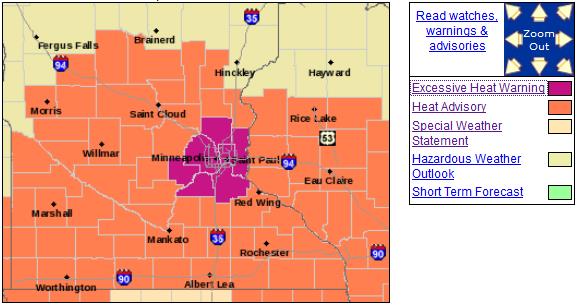

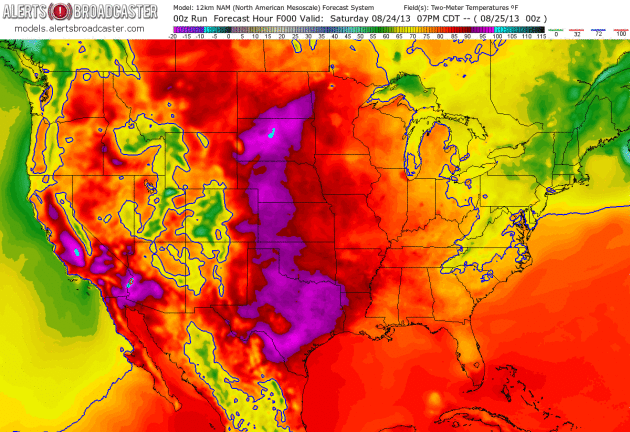

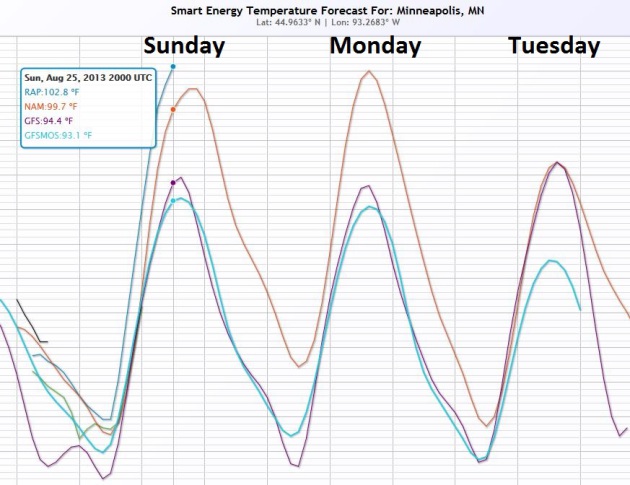
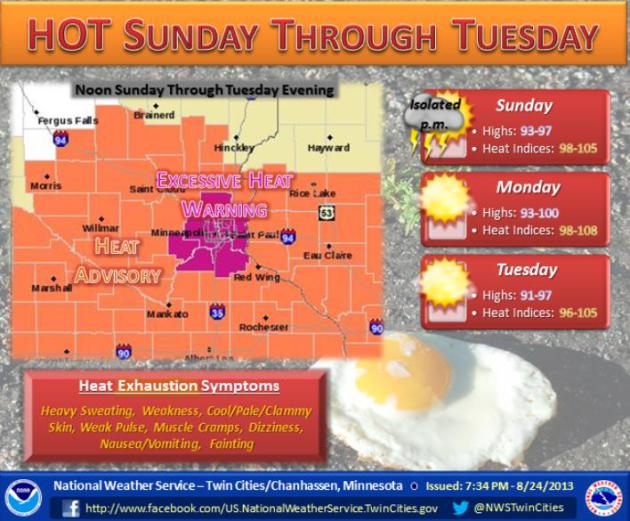
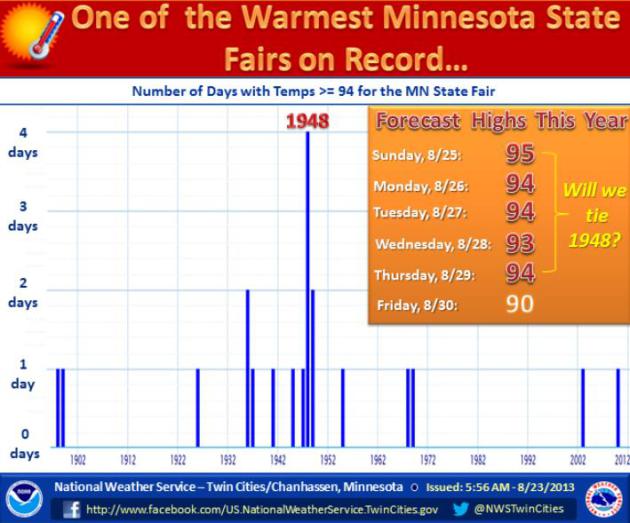
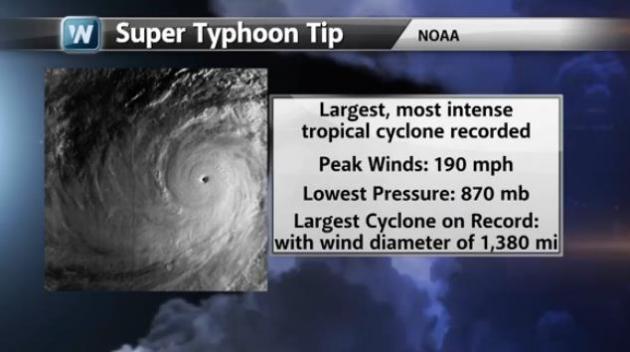
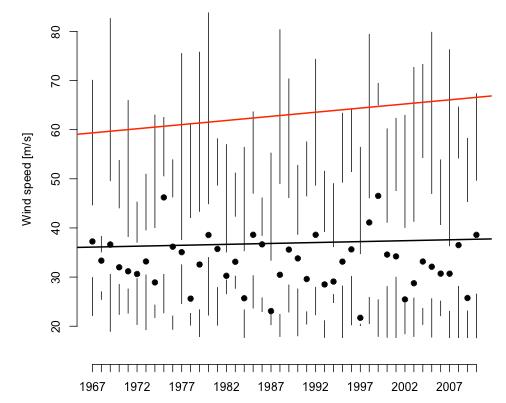
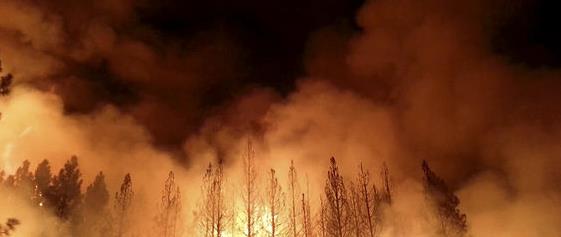
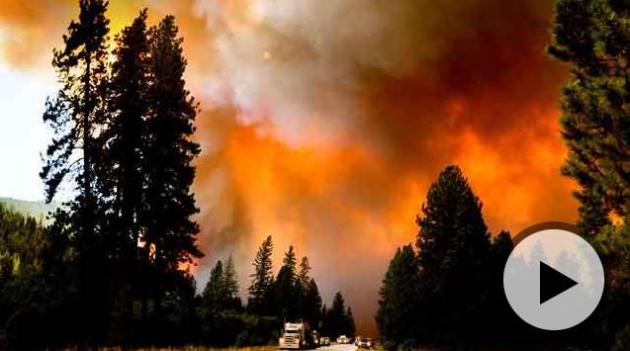







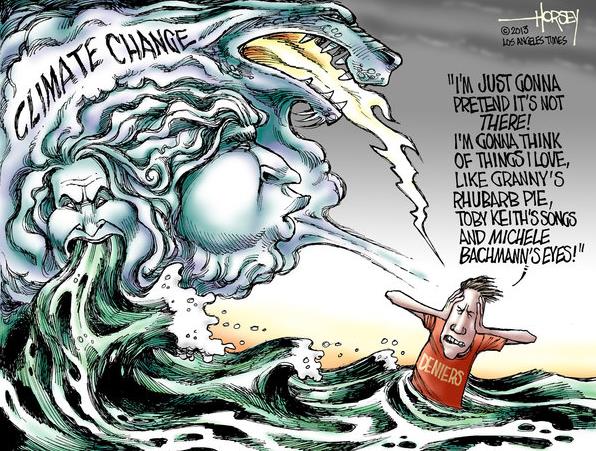
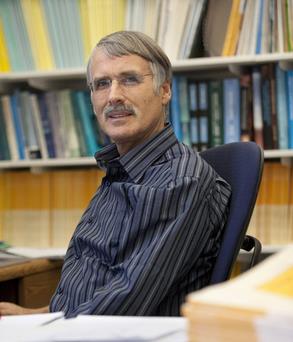
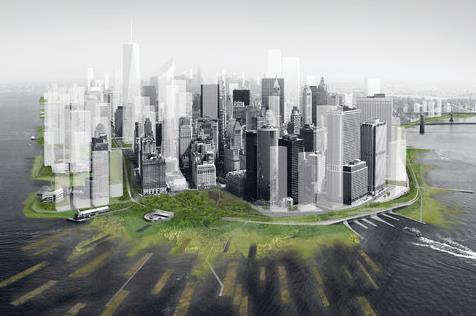



No comments:
Post a Comment